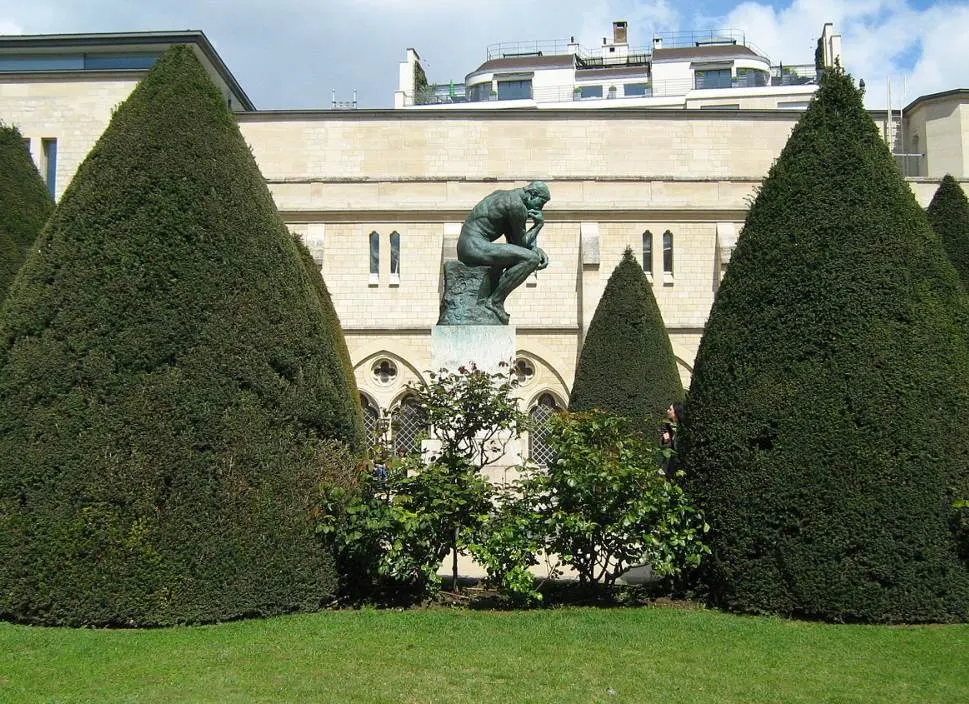One man revolutionized the world of sculpture in the late 19th century and this remarkable artwork played an essential role.
Auguste Rodin (1840-1917) was a French artist who produced some of the most famous sculptures in history.
One of these is an iconic depiction of a thinking man of which replicas can be found in public spaces and the most popular museums around the world.
Let’s take a closer look at some of the most interesting facts about The Thinker by Auguste Rodin, one of the artist’s ultimate masterpieces.
1. Rodin completed the first version of the Thinker in 1881
Auguste Rodin was a French sculptor who is considered to be the founding father of modern art. He broke free from academic sculpture and received a lot of criticism initially.
He spent about 6 years abroad during the 1870s and managed to find his artistic direction during this period in his life.
He lived in Belgium for several years and also traveled to Italy where he saw many works by the most renowned Renaissance sculptors in history.
These experiences shaped his destiny and allowed him to develop his own style, away from the ideals of the École des Beaux-Arts in Paris.
Rodin completed the first version of The Thinker in 1881. This was merely a plaster cast, much smaller than the monumental sculpture we can admire today.

The first monumental bronze sculpture wasn’t cast until the year 1904.
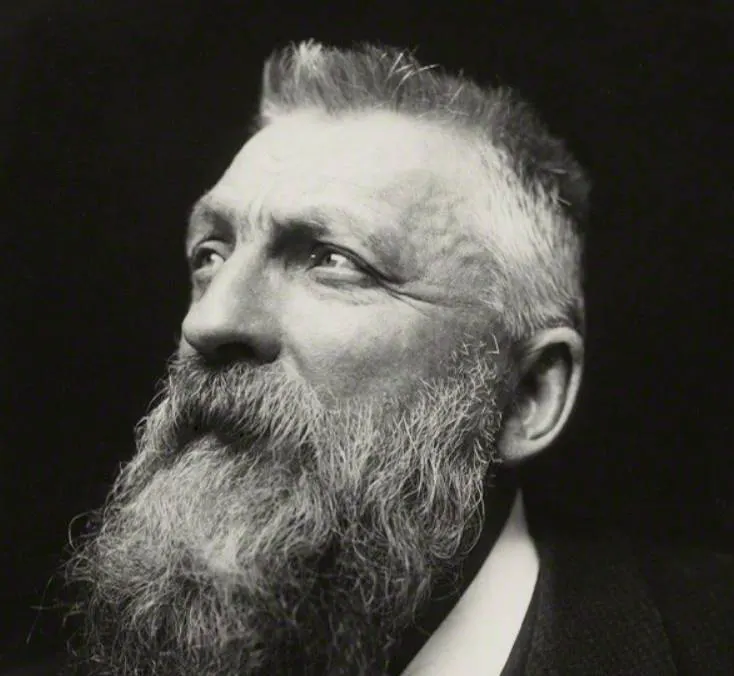
2. The sculpture was initially a prominent part of the artist’s Magnum Opus
Despite finding his purpose as an artist, he didn’t manage to find a breakthrough until the early 1880s.
He earned a commission from the Directorate of Fine Arts in 1880 which planned to establish a Decorative Arts Museum.
The commissions involved the monumental entrance gate of the museum. This work is now referred to as “The Gates of Hell,” a work that was initially inspired by “The gates of Paradise.”
The Gates of Paradise is the name given by Michelangelo (1475-1564) to Lorenzo Ghiberti’s (1378-1455) bronze doors of the Florence Baptistery.
Just like Ghiberti, Auguste Rodin turned this project into his life work. The sculptural group has dimensions of 6 x 4 x 1 meters (19.7×13.1×3.3 feet) and Rodin worked in it for about 4 decades.
It features 180 separate sculptures of which The Thinker is one of the most prominent ones.
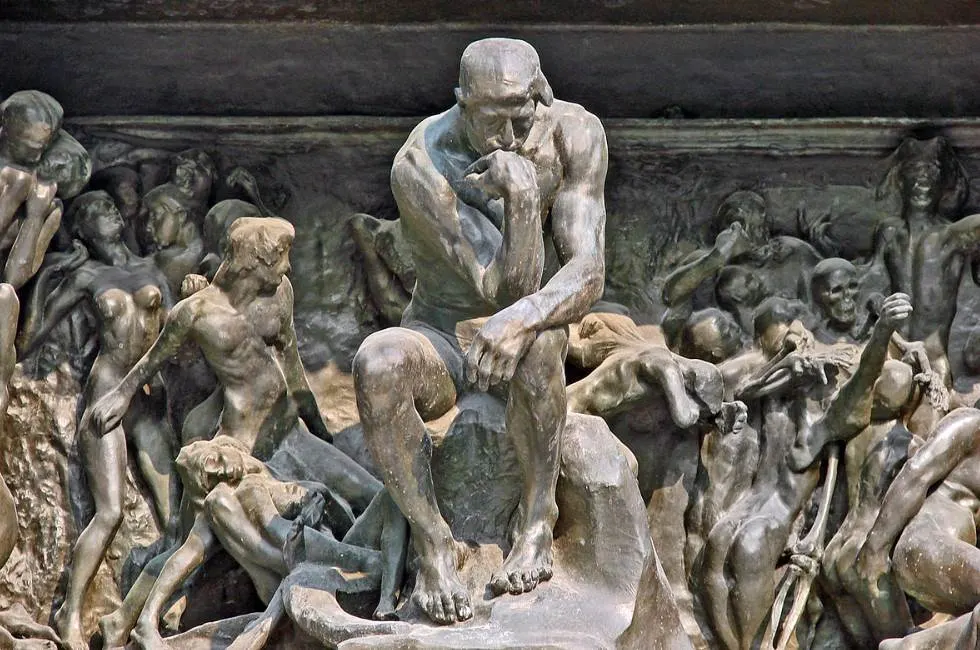
3. The sculpture was probably based on a character from an Italian poem
The Gates of Paradise in Florence, which depict a large number of scenes from the Old Testament, weren’t the only sources of inspiration for Auguste Rodin.
5he artistic composition resembles these doors, but most of the sculptures inside this group were based on characters from Dante’s narrative poem “Inferno.”
Inferno is a chapter in the poem “The Divine Comedy” in which we can follow Dante’s soul on his journey through Hell, Purgatory, and Heaven.
Rodin was a great fan of this poem and made various sketches of the characters in order to integrate them into this massive sculptural group.
Whether or not he intended to depict the figure of The Thinker as Dante himself at the Gates of Hell remains unknown.

4. Rodin intended to produce a heroic figure in the style of a Renaissance master
One of the most interesting facts about The Thinker (Le Penseur) is that it wasn’t referred to as such initially. When Rodin started working on it in 1880 he referred to it as “The Poet” (Le Poète).
It’s clear that he was still influenced by his experience in Italy, especially seeing the sculptures of Donatello and Michelangelo.
He depicted the figure naked because he wanted to emulate the heroic figures sculpted by Michelangelo. Especially the immense Statue of David comes to mind.
A work that presumably inspired Rodin more is Michelangelo’s thinking sculpture of Lorenzo de Medici called “Il Pensieroso.”
This sculpture features a similar pose and can be found inside the Sacrestia Nuova of the Basilica of San Lorenzo in Florence.

5. There are well over 2 dozen replicas of the sculpture around the world
The first plaster version of the sculpture was completed by Auguste Rodin in 1881. There are 3 original bronze casts of this work located in the following museums:
- 1884 – National Gallery of Victoria, Melbourne, Australia
- 1896 – Musée d’Art et d’Histoire, Geneva, Switzerland
- 1901 – National Gallery of Art, Washington D.C., United States
Apart from the replicas produced under the supervision of Auguste Rodin himself, dozens of replicas have been created based on the original version.
The exact number and casting history remains unclear, but it’s estimated that about 28 monumental bronze sculptures are located in museums and public spaces all around the world.
Some of these differ in size, and some are plaster replicas that are painted bronze.
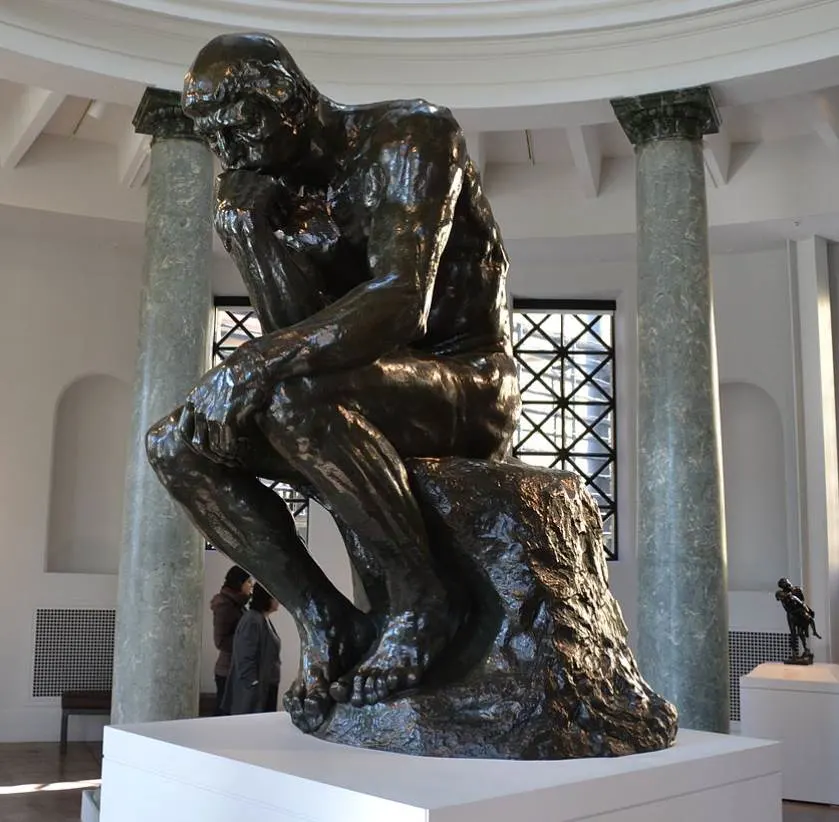
6. A posthumous casting fetched millions of dollars at an auction in 2022
Whether or not Auguste Rodin was present at the casting of the sculpture determines whether or not the sculpture could be sold for millions of dollars or not.
Regardless of this notion, sculptures produced using the original cast can fetch quite a handsome sum as well.
This was emphasized by the fact that a posthumous sculpture of The Thinker was sold for $11.14 million at a Paris auction in June 2022.
The record for a Thknker sculpture was set in 2013 when a Sotheby’s auction in New York City fetched $15.3 million for an original bronze sculpture.
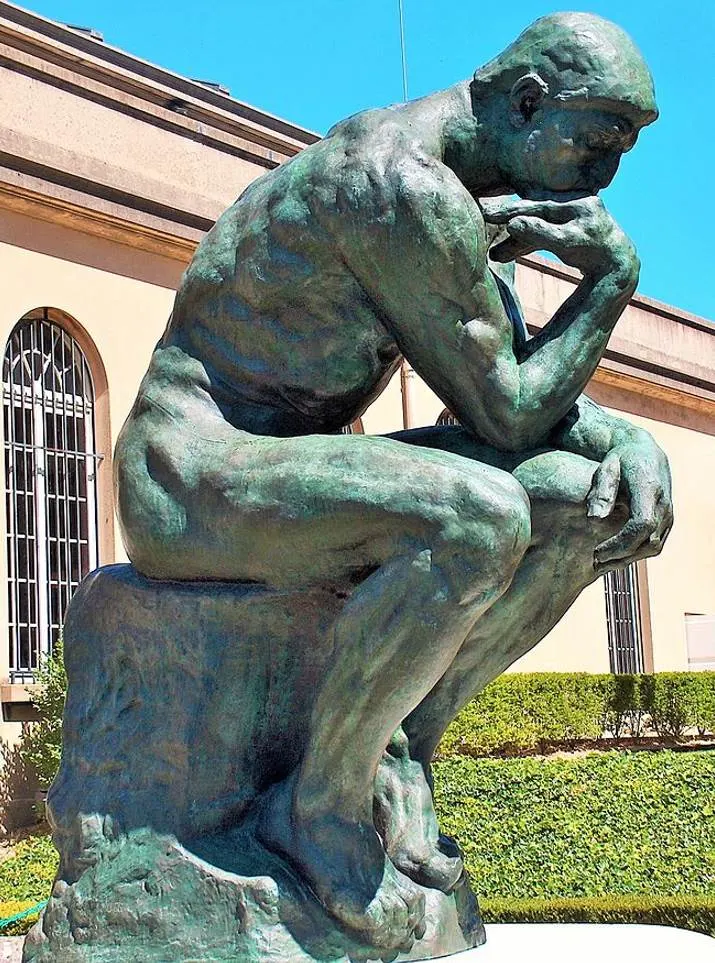
7. How big is The Thinker by Auguste Rodin?
The original plaster cast, the one that is featured in the Gates of Hell, is much smaller than the enlarged version that was cast for the first time in 2014.
The original bronze sculpture has dimensions of 189 x 98 x 140 centimeters (74.4 x 35.58 x 55.11 inches) and is often displayed in an elevated position so it can be admired from below.
8. The first bronze cast is located at a popular museum in Paris
The first sull-sized version of the sculpture was exhibited at the Salon des Beaux-Arts in Paris in 1904. This was a period in history when Rodin was arguably the most famous sculptor alive.
The original bronze sculpture was first placed in front of the Panthéon in Paris and was moved to the Musée Rodin in 1922.
Today, you can admire the original version inside the garden of this popular museum dedicated to the famous French sculptor.
